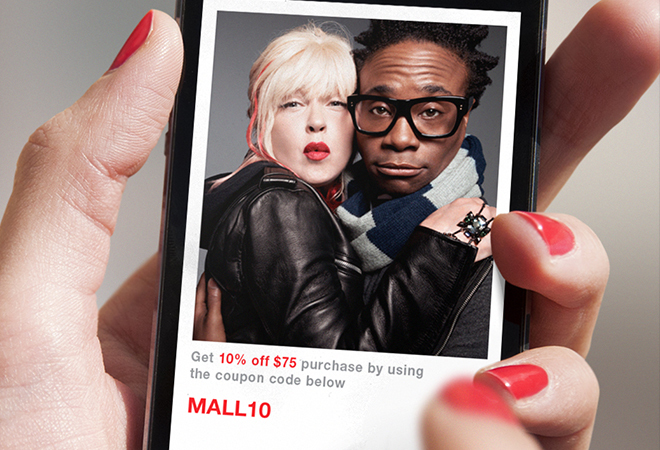
For several years now, technologists, thought leaders and experts in the out of home (OOH) space have been proclaiming each year as “the year of mobile.” It was said about 2012, 2013, 2014, and 2015… and at this point I can assume it will also be said for the year 2016. And while mobile has already surpassed TV in terms of daily consumer attention, we have not seen the year of mobile in OOH. In order to see the paradigm shift, we need to move from a mobile-last to a mobile-first strategy. While many in the OOH community still largely see mobile as an “add-on” or “nice-to-have,” with mobile content usually being an afterthought; the truth is – social media, in-store marketing, email and even YouTube have an overwhelmingly higher share of user activity coming from mobile. As Jason Miller of LinkedIn said, “Today’s successful marketers integrate all the old and new marketing channels into one overall marketing strategy.”
The thing is, we have all of the tools at our disposal to make this happen. There are close-range technologies like NFC and RFID; exciting new Bluetooth low-energy beacons; mobile geofencing and WiFi; and even old favorites like SMS and QR. All of these are readily available, affordable and easy enough to deploy with an expert mobile solutions partner. We’ve seen great examples of use cases like Google, Samsung and Paramount Pictures delivering music and video content via NFC through traditional OOH media; PUMA and Levi’s driving to store through beacons; Under Armour and KIND Snacks engaging in social chatter and promoting new products with the help of geofencing; and H&R Block helping get billions back for tax-payers through the marriage of OOH media and SMS. However, successful examples like these are few and far between as a percentage of all OOH media campaigns that have been deployed over the past several years.
To make progress, we need to rethink the definition of mobile and how it should work together with other media – owned, paid, social and in-store. FunMobility’s 2015 Marketer’s Guide is spot on when it challenges us to change our perspective. “Mobile isn’t a channel. It isn’t a screen. It isn’t an app. Mobile is at the center of modern life. It’s the engine that powers how we shop, how we socialize, how we navigate the world around us.” Mobile shouldn’t be looked at as its own thing or simply as an “add-on.” It should be the common thread that ties together all forms of media, and enables brands to have contextually relevant conversations with consumers throughout their daily journey, rather than simply bombarding them with messages and ads. However, it’s impossible to effectively integrate mobile into a fully developed marketing campaign with a mobile-last strategy – where the content and creative is designed for OOH media and then repurposed for mobile after the fact; where mobile is simply a line item on the marketing plan; where the only KPIs are clicks, impressions or site visits. Yet, we’re constantly seeing RFPs that are 29 days old with a panic note that reads, “We need the best, never-before done, panty-dropping mobile ideas by TOMORROW!”
We need to move OOH to a mobile-first philosophy. Yes, the technology is there, but technology is not of interest to the end-users. To them, it’s simply a delivery mechanism. People don’t care about the machine that dispenses soft-serve ice cream or frozen yogurt into a cup, they care about the actual taste. Yes, you can dress the dispenser up with a bright screen, add flashing LED lights, infrared sensors and a built-in camera to take a picture of you as you enjoy the creamy goodness that has just been programmatically dispensed into your cup. You can probably get a whole bunch of people to interact with that machine, out of sheer curiosity. But if the creamy goodness in your cup tastes like month-old camel’s milk, it will probably be the first and last time you try out the never-before seen contraption. In the same way, the mobile user experience, which is far more important than the delivery technology, has to be a key consideration from the start of ideation and the content has to make sense for that user, during that time, in that specific place.
Mobile + OOH has the potential to revolutionize the medium and elevate the conversation brands are having with their consumers. OOH has the ability to generate mobile engagements in a physical environment, and allow consumers to receive something meaningful during a given moment in time. With the high saturation of OOH media and the increasing time people are spending outside of their homes, there is a huge opportunity for micro-moments: when a “consumer’s motivation to act intersects with their ability to act.” Above all, once you do get the user to stop and engage, will you provide something personalized, dynamic and relevant? Will you capture attribution and collect actionable data that you can use across the entire mobile ecosystem to improve future engagement? Will you continue the conversation with those who engage at future touchpoints in OOH, in retail, online and through social media? For the future of OOH, I hope the answer is yes.
Download the PDF
Published: November 9, 2015